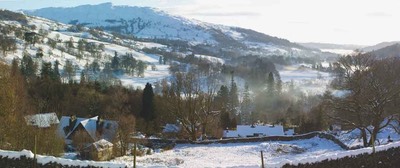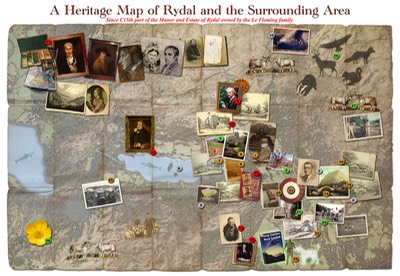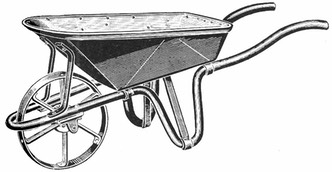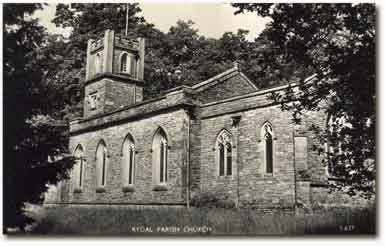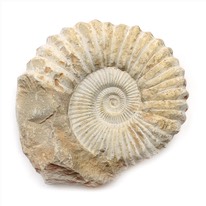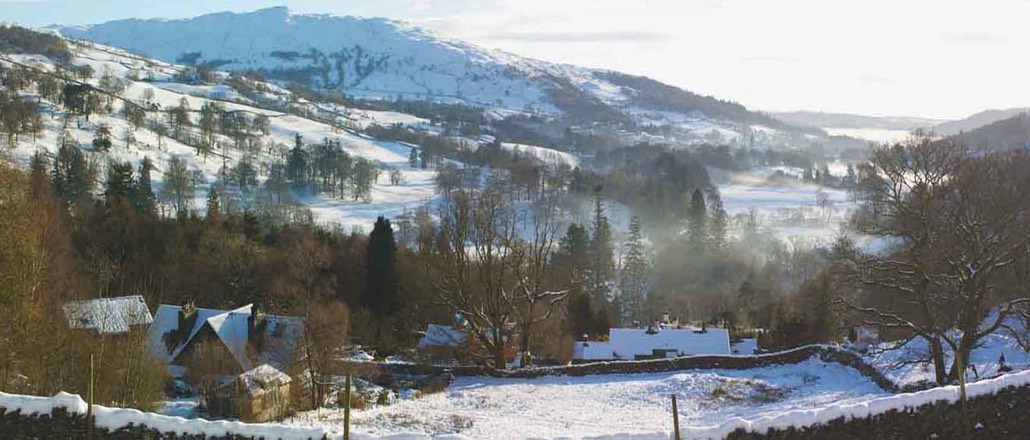
Rydal is situated between the larger villages of Ambleside and Grasmere, surrounded by wooded fells rising sharply and offering views of it's lake, Rydal Water, and surrounding mountains. It consists of a few houses, the Church, Rydal Hall, Rydal Mount (the home of Wordsworth for over 30 years) and The Glen Rothay Hotel & Badger Bar
Rydal was originally contained within the large Grasmere Parish, until it gained parish status in 1826. The name Rydal is derived from Old Norse meaning "valley where rye was grown" and is first mentioned in 1240. Its ancient manor boundary was described in 1274 and the Rydal Park dates from 1277.
The village is sited on a long established trade route from Ambleside to Keswick, via Nook Lane - Low Sweden Bridge - Rydal Hall - below Nab Scar - White Moss - Town End. Formation of the medieval deer park in the 13th century has had a marked effect on village development as the parkland is devoid of any building or settlement. Trade developed initially with packhorses along the old route and later in the 18th century with the turnpike road which followed the valley bottom land. Between the 16th and 17th centuries Rydal had the following village facilities, albeit scattered rather than in a compact group: Hall, farms and cottages; 3 inns; fulling mill; corn mill; smithy and school.
Farmsteads were originally at Hart Head, Rydal Mount, Hall Bank and Cote How, but the function of most buildings has changed over the last two centuries. Hart Head is a fine 17th century farmhouse at the top end of the village, but no longer in farming use. Nearby Rydal Mount dates from the 16th, 17th and 18th centuries. It is a Grade 1 listed building mainly due to it being William Wordsworth's home from 1813 until his death in 1850. Rash Field between the church and Rydal Mount was purchased by Wordsworth and renamed in memory of his daughter Dora. Beside the turnpike road, the Glen Rothay Hotel was originally "David's Inn", which was later enlarged and became the residence of Theodore Fry MP.
Both historically and visually the Hall is the key building in Rydal. The important Le Fleming family can be traced back to 1126, and possibly linked with the 1066 Conquest. With Sir Thomas Le Fleming marrying Isabella of the de Lancaster family, a large area near Coniston and Rydal was inherited. Originally the family lived at Coniston Hall, a fine Elizabethan mansion, and later they came to Rydal in 1575 to the "Old Hall" which was built on a knoll beside the present main road. In 1681 it was described as "now in ruins".
The "New" Hall was built by the first Sir Michael Le Fleming in the 16th century, enlarged in the 17th century, altered and refaced in the 18th century, with the main front dating from the early 19th century. Not only is it a fine building architecturally and is listed as Grade II along with the terraces, bridges, summerhouses and outbuildings, but it occupies a magnificent landscape setting. Parson and White's Directory of 1829 refers to the later Sir Michael and his improvements to the hall in the 18th century and..
"Whose taste and liberal spirit contributed much towards the perfection of these beauties which nature has so lavishly scattered round this sequestered
vale".
Also on the main road opposite the Old Reading Room is Rydal Cottage (now known as The Manor Cottage) once the home of Mary L Armitt, the well known historian who wrote about Ambleside, Rydal and Grasmere.
Her book on the the history of our village, published by Titus Wilson in 1916 is now quite scarce, but it can be viewed on-line at the University of Toronto Library by clicking here:
Cote How (originally Coat Howe) is one of the oldest buildings in the area with parts possibly dating from the 15th century. A medieval fulling mill was probably sited nearby.
Rydal has seen very little change over the past 150 years and indeed since the 1st edition of the os 6" map in 1859 there have only been five new dwellings, and these were built about the turn of the century; Hart Head Cottages, Garden Cottage, Steps End Cottages, Cote Howe Cottages and the Vicarage (now Rydal Holme). The whole village and its landscape setting are clearly a legacy of the 18th and 19th centuries.
A report published in 1973 on traffic management in the Lake District describes the main road near Rydal as "judged by any scenic standards in the world and beauty of this stretch of road is outstanding."
In most villages the main threat to local character comes from new development and unsympathetic changes. At Rydal it is the impact of parked vehicles, with tourists searching out the Wordsworth heritage, which requires positive measures to prevent further deterioration of the ground surfaces, which are so important in the setting of historic buildings.
This recognition of a place of special character was reiterated in the Department of the Environment Schedule of listed buildings in 1974 when it described Rydal as "a very fine and world-famous village group of church, bridge, Glen Rothay .. etc.. irregular but harmonious group in a picturesque setting."
(From the Lakes Parish Guide & Residents Handbook 1992)
